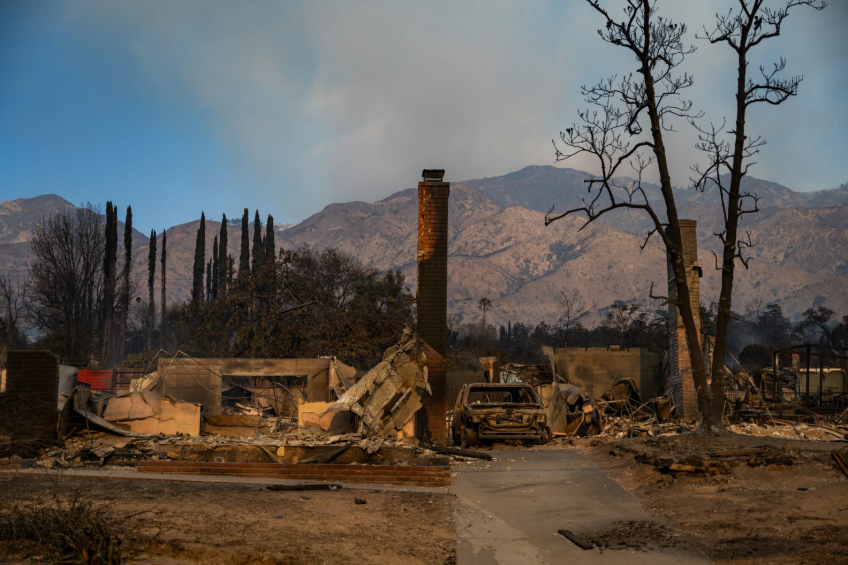SoCal Edison’s Liability From the Eaton Fire Threatens to Gobble Up State’s Safety Fund

This article was first published by the nonprofit newsroom LAist on August 1, 2025 and is republished here with permission.
California lawmakers are crafting legislation to replenish the state’s wildfire fund as Southern California Edison’s liabilities stemming from the Eaton Fire threaten to wipe it out.
This pool of money was created in 2019 after PG&E filed for bankruptcy as it faced billions of dollars in liabilities from two years of devastating Northern California wildfires ignited by its equipment.
The wildfire fund is meant to help utilities avoid bankruptcy in the future by giving them something to draw on when they’re sued because their electrical equipment started a wildfire.
Last week, SoCal Edison announced it was creating a claims fund to have a pot of money to pay people impacted by the Eaton fire. While CalFire hasn’t officially ruled on the cause of the fire, the announcement is a reasonable signal that the utility thinks it started the fire.
Without the state’s wildfire fund, Edison would probably need to declare bankruptcy. Once it’s gone, other utilities that are parties to the fund — San Diego Gas & Electric and Pacific Gas & Electric — will have no cushion if their equipment starts a bad fire.

“The utilities have been calling loudly for some sort of a fix, PG&E in particular,” said Michael Wara, an energy expert who is familiar with the discussions.
PG&E’s stock has fallen considerably since January because of the concern that the wildfire fund will be depleted.
Gov. Gavin Newsom would also like to see a fix, said Wara, although he did not address it Thursday during public comments about California’s firefighting capabilities.
“It’s bad for California when utilities go bankrupt,” Wara said, who directs the Climate and Energy Policy Program and is a senior research scholar at the Woods Institute for the Environment at Stanford University.
The current proposal involves channeling an additional $18 billion to the state’s fund. Half of that is to come from the utility companies. Half coming from ratepayers. Currently, utility customers see a fee on their monthly bill, which is called “non-bypassable charges,” that are set to end in 2035. For the average California ratepayer, this is $2.50 per month. The proposed legislation would extend these charges to 2045.
The utilities — despite needing the funds to be fixed — do not like the proposal that their shareholders pay half of the contributions and would prefer ratepayers to contribute the entire amount, according to reporting in Bloomberg.
“This is a negotiation and they are negotiating,” Wara said, noting that back in 2019, utilities said they could not pay so much money into the fund but found a way to do it. “Otherwise, their shareholders would be in an untenable situation.”
A second, and possibly more significant aspect of the agreement being hammered out is that it places limits on how much money insurance companies can recover against fire-sparking utilities. Currently, those settlements are a negotiation, generally 50 to 70 cents on the dollar. This agreement would cap that at 40 cents on the dollar. So, if State Farm paid out $1 million to a policyholder for a loss on a utility-caused fire, they could recoup a maximum of $400,000 from that utility.
That will mean that the cost of recovering from wildfires will shift slightly from electric-utility ratepayers, who live everywhere in the state, to insurance policyholders, who pay more in areas with high fire risk.
The legislation being crafted also proposes studying how to best manage wildfire costs.
If SoCal Edison admits fault for starting the Eaton Fire, it would put Altadena residents in a very different position from Pacific Palisades residents. There, the fire was likely caused by a flare-up from week-old fireworks. That means no utility can be held liable.